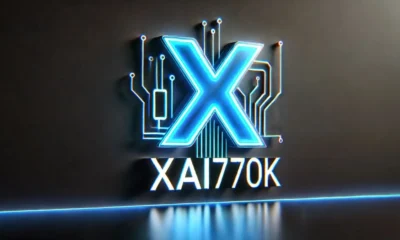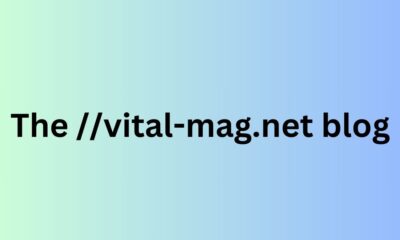GENERAL
Lesy and Spiderweb: Nature’s Intricate Dance

In the matter of nature, ‘Lesy and Spiderweb’ represent two basic types which reflect the harmonic interaction of systems. “Lesy” in encyclopaedic terms comes from Slavic origins and means forests that we all know are essential for maintaining the health of our planet by sustaining different types of species. These forests are not only home to countless biology; they are also important as sinks that steward climate change services like carbon storage. Beyond that, reflection on the relations between Lesy and Spiderwebs brings an understanding of how living beings depend on each other for the existence of all living creatures on the planet and considers the primary values of the natural world.
Understanding Lesy
Forests, also known as Lesy, are rather luxurious and balanced natural reserves that are endowed with fairly mineral vegetation and wildlife. It helps in warehousing wildlife and also acts as a food provider; also, it helps to continue the variety. It has also been established that forests are used to regulate water and precipitation and replenish groundwater. They help with global warming by being carbon reservoirs that take in carbon dioxide from the surrounding environment. Also, forests are useful for mankind’s needs, such as the sources of timber, medicinal plants, and recreational centres, among others. Sustaining these very precious natural systems is crucial to the continued integrity of the natural world and future generations.
The Fascinating World of Spiderwebs
Spiderwebs are concrete structures fixed by spiders for certain ecological purposes. All kinds of webs, orbs, funnels or cobwebs, simply put, are woven to trap their prey and support the life of the spider. These webs are beautiful additions to forests, sparkling in the morning dew and representative of nature art. Other than their aesthetic allure, spiderwebs are quite useful in the whole process of nutrient cycling, which is quite important in any environment, as they capture organic material and aid in its breakdown. These webs mirror the existence of balance within forests, which is why it is crucial to comprehend the interactive system of Lesy and Spiderweb.

The Ecological Significance of Spiders in Forests
The analysis also reveals that spiders are essential members of the forest community as it is their job to control pests. They feed on insects and hence are crucial in holding this balance to prevent huge insect invasions, which may be disadvantageous to vegetation and other forms of animal life. It can play an important predatory function, making overall positive contributions to the health of forest communities and the food webs that compose them. Furthermore, spiders also have importance as bioindicators; meaningful and different species of spiders are also suggestive of healthy ecosystems. Learning about spiders within ecology emphasizes the role of those spiders as part of the environment and, in fact, in the functioning of Lesy as the rich habitats that we all know.
Interactions Between Lesy and Spiderwebs
The relationship between Lesy and Spiderwebs best illustrates the reciprocal relationship that prevails in ecosystems. It helps in the decomposition of insects and organic matter, which are used to enrich the nutrients in the forest region. This process improves the soil quality of the substrate and enhances plant production and species variety on the layers of the ground. That is why the existence of spiderwebs also increases the degree of forest small-scale space differentiation and contributes to the formation of microenvironments for diverse organisms.
The Impact of Environmental Changes on Lesy and Spiderwebs
Disturbances within the Lesy and Spiderwebs ecosystem have been foreseen as being easily threatened by environmental factors such as a changed climate and rampant deforestation activities. Deforestation, apart from creating havoc to the habitat, compels interference with certain inter-relationships within increasing biological diversity. Weather conditions considerably alter the temperature and moisture conditions that inhabit spiders’ reproduction and range. These changes are the main causes of declines in spider numbers, adding to the already fragile stability of forest environments. Measures targeting the protection of forests as well as their inhabitants are effective in minimizing these effects. When those environmental issues are solved, we will be able to protect the important connections between Lesy and Spiderwebs that are required to keep our planet healthy.

Cultural and Mythological Significance
Lesy literally means ‘forests’, which have always been mysterious to people regarding life and several spiritual interconnections. Forests are considered sacred areas in most cultures today to show the power of forests in offering life necessities. Likewise, spiders have their place in diverse cultures being associated with creativity, patience, and even material interconnectedness. These animals are depicted in most plots as sagacious beings or even architects of ecosystems as a result of their organic functionality. What this cultural exploration of Lesy and Spiderweb made me realize is that these are things that have to be preserved because they help people better understand the natural world and its place in their lives.
Educational and Recreational Importance
The relationship between Lesy and Spiderwebs provides invaluable opportunities for education and recreation. Forests serve as living classrooms where people can learn about biodiversity, ecological interactions, and the importance of conservation. Educational programs focused on forest ecosystems can enhance public awareness and appreciation for nature. Additionally, recreational activities such as hiking, birdwatching, and photography allow individuals to engage with and explore these environments. By fostering a connection with the natural world, we can inspire a sense of stewardship and encourage efforts to protect both Lesy and Spiderwebs for future generations.
References and Further Reading
For those interested in delving deeper into the subjects of Lesy and Spiderwebs, numerous resources are available. Recommended readings include academic texts on forest ecology, books on spider biology, and online platforms focused on biodiversity and conservation. Engaging with these materials can enrich our understanding of the vital roles that forests and spiders play in sustaining the health of our planet, encouraging further appreciation for the beauty and complexity of the natural world.
Conclusion
In conclusion, the interplay between Lesy and Spiderweb reveals the intricate dance of nature’s ecosystems. Forests provide essential habitats and resources while serving as a canvas for the artistry of spiderwebs. Understanding the ecological significance of these elements highlights the delicate balance necessary for maintaining healthy ecosystems. As we face environmental challenges, preserving both Lesy and Spiderwebs is paramount. By recognizing the interconnectedness of all living things, we can foster a sustainable future for our planet’s rich biodiversity, ensuring the beauty and complexity of nature endure for generations to come.
-

 BIOGRAPHY7 months ago
BIOGRAPHY7 months agoBehind the Scenes with Sandra Orlow: An Exclusive Interview
-

 HOME1 year ago
HOME1 year agoDiscovering Insights: A Deep Dive into the //vital-mag.net blog
-

 HOME1 year ago
HOME1 year agoSifangds in Action: Real-Life Applications and Success Stories
-

 BIOGRAPHY1 year ago
BIOGRAPHY1 year agoThe Woman Behind the Comedian: Meet Andrew Santino Wife




























